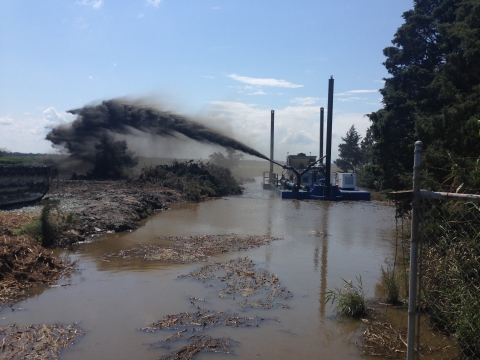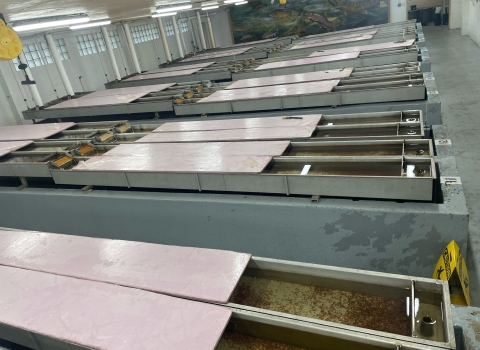Prime Hook National Wildlife Refuge in Sussex County, near Milton, is a “prime” example of allowing nature to heal itself as migratory shorebirds and marshland grasses have returned over the past decade, since Superstorm Sandy decimated the coastal refuge in 2012.
Fowler’s Beach, located on the coastline of the Refuge, is now a thriving habitat for a range of celebrated species, including American oystercatchers, rufa red knots, and piping plovers—true travelers who found nesting grounds after the beaches were restored this past decade.
“The destruction caused by the storm led to investments in dozens of projects, like the one here at Prime Hook, that help communities prepare for and protect against increasingly frequent intense storms,” said Kyla Hastie, acting Northeast Regional Director for the U.S. Fish and Wildlife Service.
“It’s just really gratifying to see the transformation that has occurred here,” said Senator Tom Carper as he took an airboat tour of the Prime Hook wetlands on the 10th anniversary of the storm’s landfall. “We invested a huge amount of taxpayer dollars, and we decided, rather than telling Mother Nature what to do, take a cue from her and let Mother Nature take her course. And it’s done remarkably well.”
Superstorm Sandy strengthened off the East Coast on Oct. 28, 2012, and slammed into Delaware’s coastline Oct. 29, 2012, as a Category 1 hurricane, ravaging Delaware’s coast.
With funding secured by Congress, land managers and partners at the refuge began a $38 million restoration plan that let natural patterns lead in restoring the marsh and correcting the site’s water flow.
“We really wanted it to self-heal. … This was a unique opportunity, and we need to do bigger-scale, bigger-reward restoration with larger funding in the future,” said Bart Wilson, one of the project’s lead biologists. “This place is like a field of dreams for restoration. The eel, the alewife and the piping plover are here. The plover is utilizing the restored beaches at Fowler Beach for nesting.”
“Prime Hook is more sustainable now, and we have not had significant flooding here in over six years” because of the coastal resiliency work, noted Wilson.
Carper added, “The restoration work here is a model for the nation.”
“We got to do some things that are really bold and big here at Prime Hook,” Hastie said.
“We were able to use nature-based solutions to be able to protect nearby communities [from the continued flooding they experienced]. Through ongoing research and monitoring, we are learning and adapting, changing as conditions change, and working with nature to build a stronger coast and maximize return-on-investment. There is some dedicated funding of $125 million in the Inflation Reduction Act that is directed toward national wildlife refuges to be able to employ these nature-based solutions. We will take these lessons. It is exciting to be able to do this work in other places across the country.”
Hastie noted that sand was dredged and pumped back onto Fowler Beach.
“We pumped the sand back with the help of the Army Corps of Engineers, who were instrumental in creating this new beach,” she said, adding that there were three dredge vessels working on the beach replenishment.
Kate Toniolo, refuge manager at Prime Hook National Wildlife Refuge called Prime Hook “one of the most productive habitats in the entire world, with its vast ecosystem.”
“The piping plover were the biggest surprise for us,” said Susan Guiteras, the supervisory wildlife biologist at the refuge. “We were not expecting them to take up residence and build the nests here at Fowler Beach.” They began nesting before the proverbial paint had even dried.
The rufa red knot had just completed their migratory feast on Fowler Beach. Josh Smith, Prime Hook’s visitor services manager, said that the horseshoe crabs whose eggs they feed on are so prehistoric in nature that they likely predate all of the other species at Prime Hook, including the trees. Biologists estimate that horseshoe crabs have remained basically unchanged genetically for 445 million years.
The innovative techniques that prioritize resilience and rebounding from disasters may not prime the refuge for the next 445 million years of disturbance, but they do set Prime Hook up to rebound on its own through decades of climate change climate change
Climate change includes both global warming driven by human-induced emissions of greenhouse gases and the resulting large-scale shifts in weather patterns. Though there have been previous periods of climatic change, since the mid-20th century humans have had an unprecedented impact on Earth's climate system and caused change on a global scale.
Learn more about climate change to come.



